Introduction to E-commerce Website Design and Its Importance
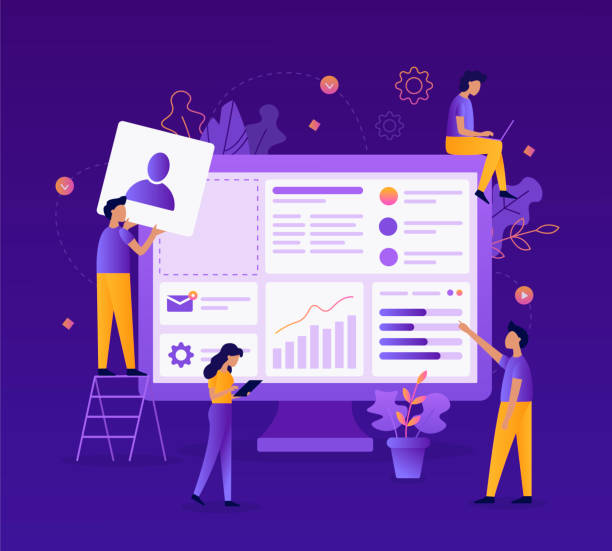
In today’s world, an online presence has become more vital than ever for any business.
E-commerce website design is no longer a luxury option, but rather a necessity for survival and growth in competitive markets.
A well-equipped #online_store is not just a showcase for your products and services, but also a powerful platform for communicating with customers, providing support, and analyzing consumer behavior.
This process includes various stages, from choosing the right platform and designing an attractive user interface to implementing secure payment gateways and digital marketing strategies.
The main goal of #online_store_web_design is to create an easy, enjoyable, and secure shopping experience for customers, encouraging them to return and make repeat purchases.
Neglecting details in this area can lead to missing countless opportunities in the online market.
For small and large businesses, investing in building an e-commerce website means access to a much wider market beyond geographical boundaries, allowing them to offer their products to customers across the country or even globally.
From an educational perspective, a complete understanding of the components of a successful e-commerce website is the first step to entering this field and helps you make the best decisions for your business.
This article provides a comprehensive and explanatory guide to understanding the various dimensions of designing an online store.
Are you dissatisfied with the low conversion rate of visitors to customers on your e-commerce site?
Solve this problem forever with professional e-commerce website design by Rasaweb!
✅ Increase visitor-to-customer conversion rate
✅ Create an excellent user experience and build customer trust
⚡ Get free consultation
Key Elements of a Successful E-commerce Website
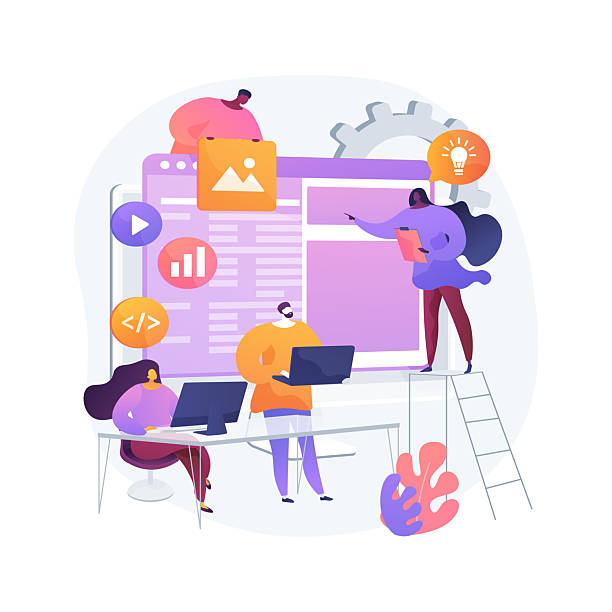
A successful e-commerce website is not just about listing products; it requires precise architecture and attention to details that improve the user experience (UX) and ultimately lead to an increase in conversion rates.
The first key element is a visually appealing and user-friendly User Interface (UI) design.
Users should be able to navigate the site easily, find their desired products, and complete the purchasing process without complexity.
High-quality photos, accurate and comprehensive product descriptions, and customer reviews are of high importance.
The second element is an efficient Content Management System (CMS) that allows you to easily manage product inventory, update prices, and add new content.
Secure and diverse payment systems, including credit cards, online payment gateways, and even cash-on-delivery options, are other crucial factors that build customer trust.
Site loading speed also plays a significant role in retaining users; a slow website quickly drives customers away.
In a specialized context, Search Engine Optimization (SEO) should also be considered from the initial stages of online store design to ensure your website is visible in search results.
Providing clear and transparent guidance on shipping, returns, and customer support significantly helps reduce ambiguities and increase customer satisfaction.
All these elements must work in harmony to provide a flawless shopping experience for users.
Choosing the Right Platform for E-commerce Website Design

Choosing the right platform is one of the most important decisions in the journey of e-commerce website design that can determine the success or failure of your online business.
Various platforms with different capabilities and features are available in the market, each with its own advantages and disadvantages.
Platforms like WooCommerce, which functions as a plugin for WordPress, are an excellent option for those seeking high flexibility and complete control over their site.
This platform is open-source and provides extensive customization possibilities.
In contrast, Shopify is a SaaS (Software as a Service) platform that is much easier to manage and maintain, making it ideal for businesses that prefer fewer technical concerns.
Additionally, there are other platforms like Magento for large and complex stores, or custom development solutions for very specific needs.
Platform selection should be based on factors such as budget, product volume, technical expertise level, customization needs, and future scalability.
A thorough analysis and comparison between these platforms can help you make the best decision for the future of your e-commerce business.
This section analytically reviews the available options and provides explanatory information for each platform.
| Platform | Advantages | Disadvantages | Suitable For |
|---|---|---|---|
| WooCommerce (WordPress) | High flexibility, thousands of plugins, large user community, full control over data. | Requires more technical knowledge for management, user responsible for maintenance and security. | Small and medium businesses with high customization needs. |
| Shopify | Ease of use, excellent support, high security, easy scalability, quick setup. | Monthly cost, limitations in full customization, transaction fees. | Startups and medium businesses that prefer simplicity and speed. |
| Magento | Powerful and highly scalable, suitable for large stores, extraordinary flexibility. | High complexity, requires specialized developer, high costs. | Large companies and organizations with complex needs and high traffic volume. |
The Importance of Responsiveness and User Experience in Online Stores
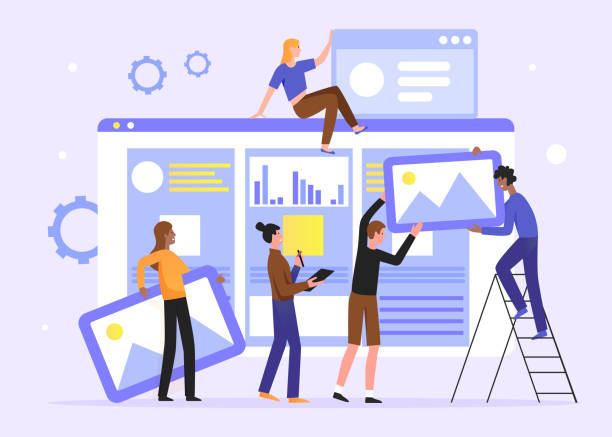
In the current digital age, the importance of Responsive Design and User Experience (UI/UX) in e-commerce website design cannot be overstated.
With the increasing use of mobile devices for internet browsing and online shopping, ensuring that your website displays correctly on all devices, including desktops, tablets, and smartphones, is essential.
A responsive design ensures that your site adapts seamlessly to various screen sizes and provides a unified and smooth user experience.
If your website doesn’t function correctly on mobile, users will quickly abandon it and move towards your competitors who offer a better experience.
In addition to responsiveness, the quality of the user experience significantly impacts conversion rates and customer loyalty.
A simple, intuitive, and attractive user interface makes it easy to search for products, streamlines the payment process, and guides the customer through every stage of the purchase.
Using readable fonts, appropriate colors, sufficient white space, and clear visual hierarchy are among the elements that help improve the user experience.
The specialized section on UI/UX design includes user needs research, wireframing and prototyping, and usability testing to ensure the website is not only aesthetically pleasing but also functional.
An e-commerce site with an excellent user experience not only boosts sales but also solidifies your brand in customers’ minds and serves as a practical guide to success.
Did you know that 94% of users’ first impressions of a business are related to its website design? With professional corporate website design by **Rasaweb**, turn this first impression into an opportunity for growth.
✅ Attract more customers and increase sales
✅ Build credibility and trust in the audience’s eyes⚡ Get free website design consultation!
SEO Strategies for Increasing E-commerce Website Traffic
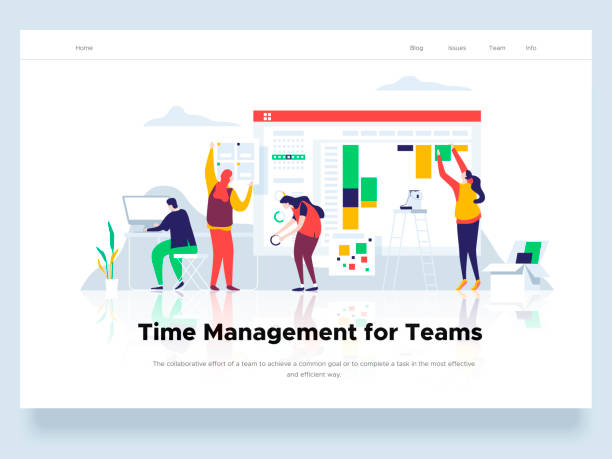
Having a beautiful and user-friendly e-commerce website is useless without sufficient traffic.
This is where Search Engine Optimization (SEO) strategies come into play.
For anyone planning to build an e-commerce website, understanding SEO principles is essential to ensure their website ranks high in Google and other search engine results.
This includes keyword research, content optimization, site structure, and link building.
Keywords relevant to your products and services should be strategically used in titles, product descriptions, meta tags, and URL addresses.
High-quality and unique content for each product, along with optimized images, not only helps SEO but also improves the customer shopping experience.
Furthermore, the internal site structure should be designed so that search engines can easily crawl and index your pages; this means having a logical information architecture and proper internal linking.
External link building (backlinks) from reputable sites also increases your site’s authority and helps its ranking.
Additionally, site loading speed, mobile compatibility, and security (using HTTPS) are also important factors in SEO.
This section discusses these topics in an educational and specialized manner so that every business owner can optimize their website and attract more organic traffic with these guidelines.
Security and Building Trust in E-commerce
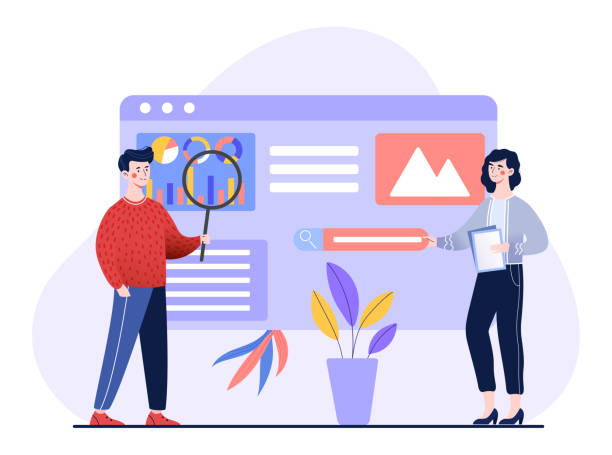
In the world of e-commerce, security is not just a technical feature; it is the backbone of customer trust.
Without trust, no purchase will occur.
Therefore, when designing an e-commerce website, ensuring the security of customer data and financial transactions must be a priority.
Using an SSL/TLS certificate (HTTPS) is an absolute necessity that encrypts data transmitted between the user and the server, preventing eavesdropping.
This is just the first step.
Choosing a secure and reputable payment gateway that complies with international standards such as PCI DSS is critically important.
Furthermore, transparent and accessible privacy policies assure customers that their personal information will not be misused.
Displaying e-trust symbols and security logos on the website visually indicates to customers that your site is reputable and secure.
Regular software and platform updates, continuous security monitoring, and having a robust data backup plan are other specialized solutions for protecting the website against cyberattacks and data loss.
This section, in a specialized and guiding manner, helps e-commerce website managers, by adopting necessary security measures, not only protect their and their customers’ information but also provide a secure and reliable environment for online shopping, which directly leads to increased sales and customer loyalty.
Marketing and Advertising After Launching an Online Store
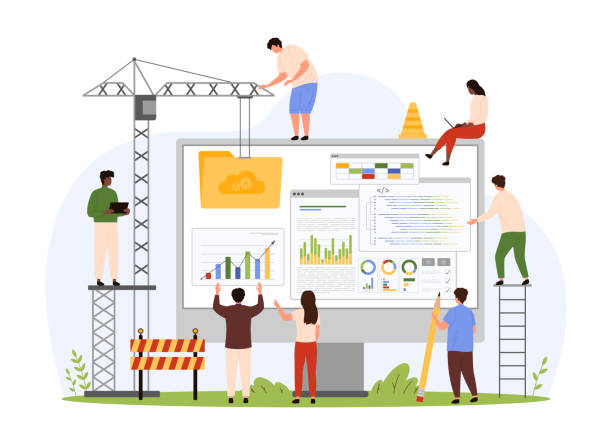
After completing e-commerce website design and launching it, the main work just begins: attracting customers and increasing sales.
Without a strong marketing strategy, even the best online store will not be seen.
Digital marketing strategies must be implemented analytically and planned.
Content marketing through blogging and creating product-related content can increase organic traffic and boost your brand’s credibility.
Active presence on social media and running targeted advertising campaigns on platforms like Instagram, Telegram, or Facebook, is an effective way to reach new audiences.
Email marketing is also a powerful tool for maintaining communication with existing customers, informing them about discounts and new products, and recovering abandoned shopping carts.
Paid advertising campaigns (PPC) on Google (Google Ads) or social media can yield immediate results and drive targeted traffic to your site.
Collaborating with influencers and affiliate marketing are other ways to expand the market.
Analyzing marketing data is crucial for understanding the effectiveness of each campaign and optimizing the budget.
This section analytically examines various marketing channels and provides practical guidelines for their effective implementation so that your online store can achieve its business goals.
| Marketing Channel | Description | Key Points |
|---|---|---|
| Content Marketing (Blog) | Producing articles, guides, and educational videos related to products and the industry. | Answering customer questions, increasing credibility, improving organic SEO. |
| Social Media Marketing | Active presence on platforms like Instagram, Facebook, Telegram, TikTok. | Engaging with audiences, targeted advertising, viral campaigns. |
| Email Marketing | Sending newsletters, discounts, updates to customer email lists. | Building loyalty, recovering abandoned carts, direct communication. |
| Paid Advertising (PPC) | Advertising on search engines (Google Ads) and social media. | Quickly reaching target customers, precise budget control, accurate ROI measurement. |
Performance Analysis and Continuous Optimization of E-commerce Website

Launching an e-commerce website is not the end; it’s the beginning of a continuous process of analysis, optimization, and improvement.
For long-term success in e-commerce, it is necessary to continuously monitor your website’s performance and make data-driven decisions.
Tools like Google Analytics provide valuable information about user behavior, traffic sources, popular pages, conversion rates, and customer drop-off points in the purchase funnel.
Analyzing this data allows you to identify your website’s strengths and weaknesses.
For instance, if you notice many users abandon their shopping carts at the payment stage, this indicates a problem in the payment process that needs to be resolved.
A/B testing for comparing different versions of a page or design element is a powerful tool for Conversion Rate Optimization (CRO).
For example, you can test two versions of an “Add to Cart” button with different colors or texts to see which performs better.
Additionally, surveying customers and collecting their feedback provides valuable insights for improving user experience and product.
This analytical and educational approach not only helps you resolve technical or design issues but also uncovers opportunities for developing new products and improving services.
Continuous optimization of an e-commerce website is a specialized process that directly impacts sales growth and customer satisfaction, allowing you to adapt to market changes.
Does your current website convert visitors into customers or drive them away? Solve this problem forever with professional corporate website design by Rasaweb!
✅ Build credibility and powerful branding
✅ Attract target customers and increase sales
⚡ Get free consultation now!
Common Challenges in E-commerce Website Design and Their Solutions
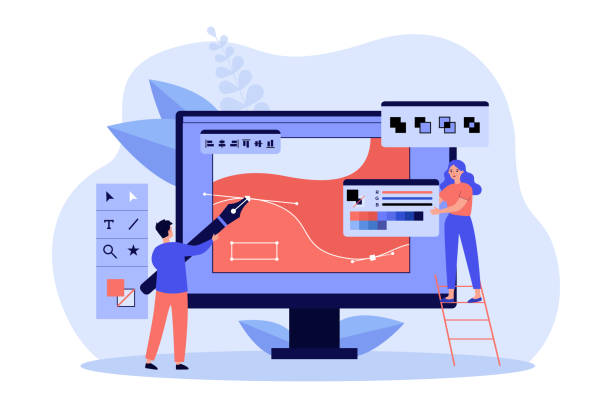
Designing e-commerce websites, despite numerous advantages, is not without challenges.
One of the most challenging issues is fierce competition in the online space.
With thousands of online stores in every industry, how can one stand out? The solution is to offer a Unique Selling Proposition (USP), superior user experience, and innovative marketing strategies.
Another challenge is inventory management and logistics processes.
If your store cannot display accurate inventory or ship orders on time, you will quickly lose customer trust.
The solution is to use inventory management systems and CRM software that automate and optimize processes.
Issues related to cybersecurity and data protection are also always a serious concern.
DDoS attacks, phishing, and data breaches can cause irreparable damage.
Using the latest security protocols, firewalls, and conducting regular penetration tests is essential.
Also, many businesses face difficulties in managing online customer support.
Customers expect quick and effective responses.
Implementing online chat systems, comprehensive Frequently Asked Questions (FAQ), and an efficient support team can overcome this challenge.
Another challenge is the need for continuous website updates and adaptation to changes in search engine algorithms and new design trends.
This section provides an explanation of these challenges and specialized solutions to overcome them, so that online store managers can proceed with full awareness and step towards success.
The Future of Online Retail and Emerging Trends

The future of online retail is evolving at a breathtaking pace, and awareness of emerging trends is vital for anyone looking to develop e-commerce websites.
One of the most important new trends is the integration of Artificial Intelligence (AI) and Machine Learning into the shopping experience.
AI can analyze user behavior to provide personalized product recommendations, manage responsive chatbots, and even assist in pricing optimization.
This makes the shopping experience much more engaging and efficient.
Augmented Reality (AR) and Virtual Reality (VR) are also changing how customers interact with products.
Imagine a customer being able to visualize furniture in their home before buying it, or virtually trying on clothes; these capabilities not only have high appeal but also reduce product return rates.
Social Commerce, meaning direct purchasing from social platforms like Instagram, is also rapidly growing and creates new opportunities for sellers.
Seamless and frictionless payments, such as biometric or one-click payments, are also among other trends that simplify the purchasing process.
Furthermore, sustainability and ethical practices in the supply chain and products are growing concerns for consumers, and stores that address these issues can gain a competitive advantage.
This section analytically and with a news-oriented approach, discusses the bright and exciting future of online retail and provides guidelines for adapting to these changes.
Frequently Asked Questions
| Question | Answer |
|---|---|
| What is e-commerce website design? | The process of creating an online platform for displaying, selling, and managing products or services to customers over the internet. |
| Why are User Interface (UI) and User Experience (UX) design important for an e-commerce website? | Good UI/UX design allows users to easily navigate the site, find their desired product, and complete the purchase process without difficulty, leading to increased sales and customer satisfaction. |
| What features should a professional e-commerce website include? | Comprehensive product catalog, user-friendly shopping cart, product comparison feature, robust filtering and search system, secure payment gateway, user panel, customer review section, and mobile optimization. |
| Which platforms are commonly used for e-commerce website design? | Ready-made platforms like WooCommerce (on WordPress), Shopify, Magento, as well as custom development depending on project needs and budget. |
| What are the most important security tips in e-commerce website design? | Using HTTPS (SSL) protocol, payment gateway security, protection against common attacks (like SQL Injection, XSS), and regular updates of the platform and plugins. |
And other services of Rasaweb Advertising Agency in the field of advertising
Smart Advertising Campaign: A blend of creativity and technology to attract customers through intelligent data analysis.
Smart Sales Automation: Designed for businesses seeking to increase sales through intelligent data analysis.
Smart Sales Automation: A blend of creativity and technology for user engagement through key page optimization.
Smart Data Analysis: An innovative platform for improving SEO ranking with Google Ads management.
Smart Link Building: Professional optimization for online growth using Google Ads management.
And over hundreds of other services in the field of internet advertising, advertising consultation, and organizational solutions
Internet Advertising | Advertising Strategy | Advertorial
Resources
E-commerce Website Design Guide
SEO Tips for Online Store
Key Success Factors in E-commerce
Choosing the Best CMS for an Online Store
? With Rasaweb Afarin, elevate your business to digital heights and establish a powerful online presence tailored to modern needs with our specialized services, including corporate website design. To learn more about our comprehensive digital marketing solutions, visit Rasaweb Afarin’s website.
📍 Tehran, Mirdamad Street, Next to Central Bank, Southern Kazeroun Alley, Ramin Alley, No. 6


